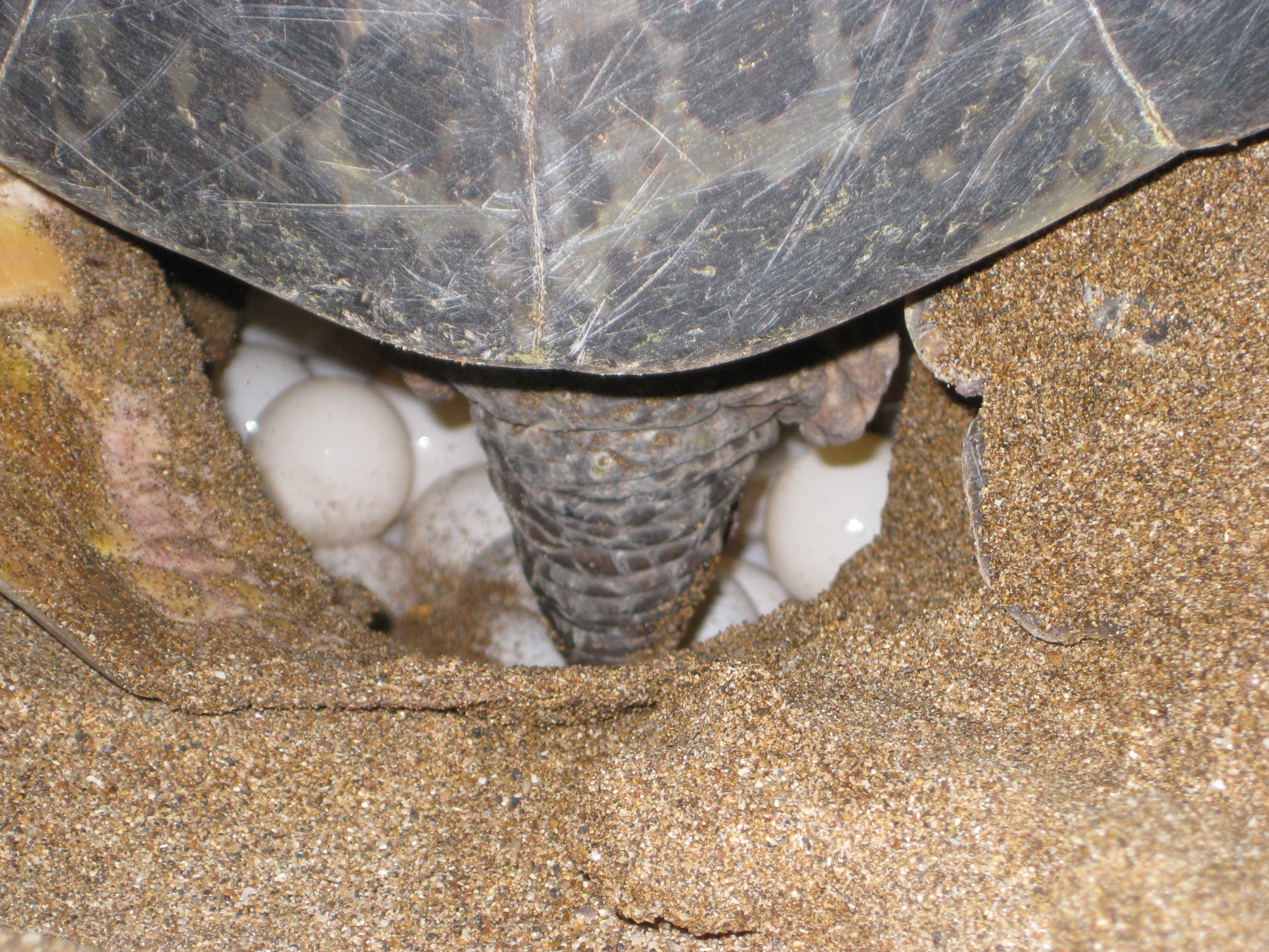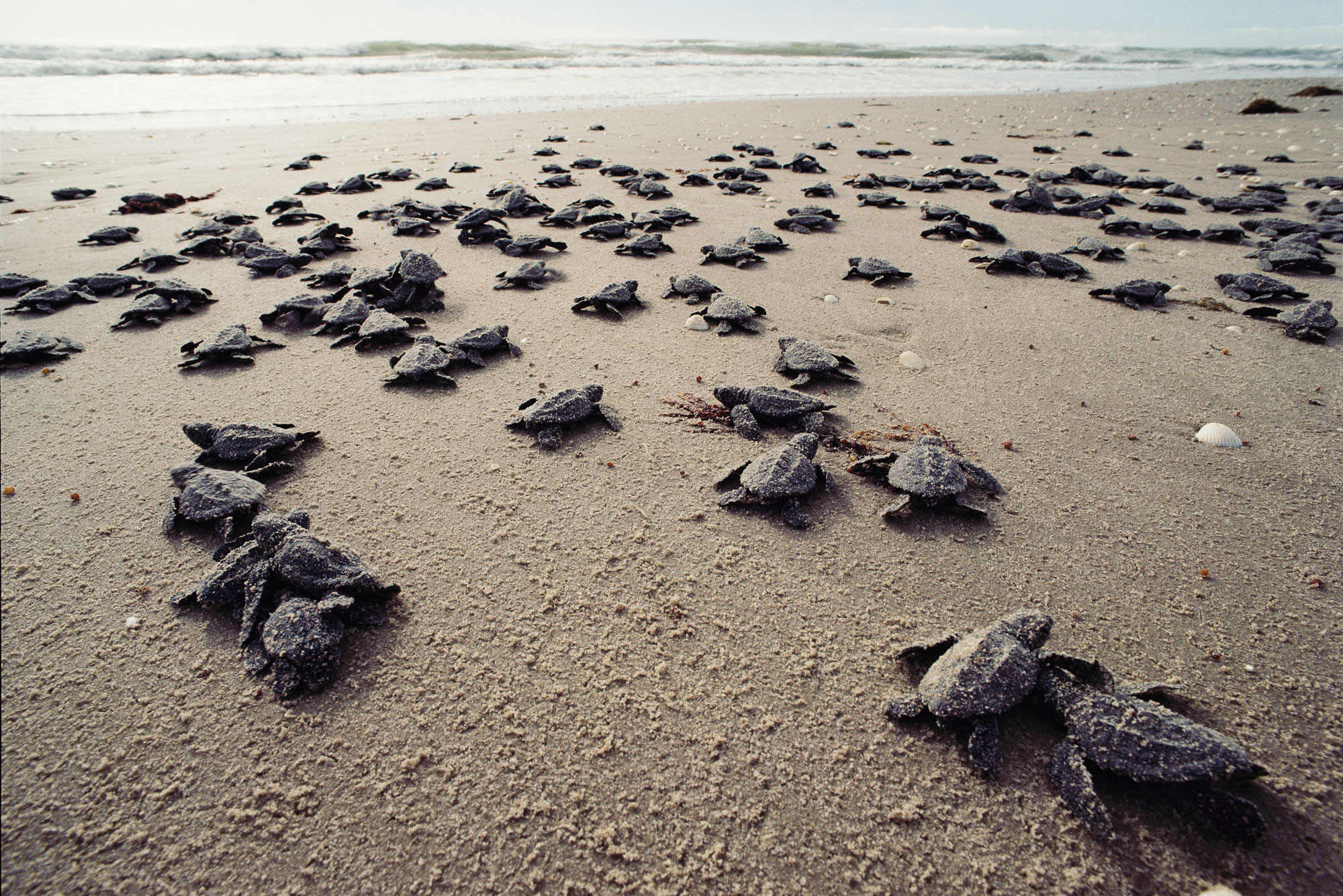Sea turtles lay their eggs on beaches to breed, hundreds per nest, depending on the species. Their eggs are sensitive to environmental conditions during the incubation period in the nest, such as temperature and rainfall (Ackerman 1997). These factors influence the survival chances and also the sex of the offspring (Santidrian-Tomilo et al 2015).

Because of high temperatures fewer eggs come out and more female sea turtles are born. Because of more rain the temperature in the nest decreases, which stimulates the development of the embryos and at the same time makes it more difficult, because wet eggs are less permeable to oxygen. Global warming and more and heavier rainfall therefore have a negative influence on the chances of survival of sea turtles.

The sex of sea turtles is determined halfway through the incubation period. It differs per type and per region at which temperature males or females are born. For example, Hawksbill sea turtles (Caretta caretta) in the Caribbean Sea the chance of a male or female is 1 to 1 at a temperature of 29 degrees, with a margin of 2-3 degrees that both genders occur. Above 31 degrees only females are born, below 27 degrees only males (Ackerman 1997). If the forecast is that this century the temperature on earth rises 4 degrees, then climate change is a major threat to the survival of sea turtles. Research is currently being conducted into whether the male-female ratio is already shifting, by measuring the temperature in nests. It is also being investigated whether it is possible to determine the sex of the hatched young with the help of the embryonic fluid that remains in the eggs.

Many species of sea turtles are already under threat and are on the IUCN red list of endangered species. This is due to all sorts of other environmental factors: the disappearance of their living and food areas such as coral reefs and seagrass fields, the disappearance of (protected) beaches for nesting, legal and illegal fishing, by-catch in nets, and damage by propellers of shipping. Because sea turtles are migratory species, local protection is not sufficient and international cooperation is desperately needed to solve the bottlenecks as much as possible.
CoralGardening provides information and lectures about the importance of coral reefs as a habitat and food area for, among other things, turtles and aims for more protected sea areas. During our dives for taking protective measures, planting coral and monitoring the CoralGarden and the surrounding reefs, we record our observations of turtles and register them in the local database. This is then shared with regional and national governments, environmental organizations and universities. Sea turtles in the Gulf of Thailand and around Koh Tao, turtle island, are monitored and with citizen science better protective measures can be taken.

